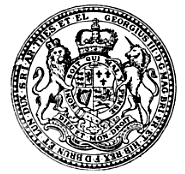New York General Assembly facts for kids
Quick facts for kids New York General Assembly |
|
|---|---|
 |
|
| Type | |
| Type | |
|
Term limits
|
None |
| History | |
| Founded | October 17, 1683 |
| Disbanded | April 3, 1775 |
| Succeeded by | New York Provincial Congress |
| Leadership | |
|
Speaker
|
Speaker of the New York General Assembly
|
| Structure | |
| Seats | 39 |
|
Length of term
|
Varied |
| Authority | Charter of Liberties and Privileges |
The General Assembly of New York was like the main law-making group for the old Province of New York. This was back when New York was a colony owned by a person and later a colony ruled by the King of England. This group helped govern New York until April 3, 1775. It stopped meeting when the Revolutionary War began.
How the Assembly Started
The New York General Assembly first met on October 17, 1683. This was when Thomas Dongan, 2nd Earl of Limerick was the governor. They created an important document called "A Charter of Liberties." This charter said that the main power to make laws would be shared. It would be shared between the governor, his council, and the people meeting in the General Assembly.
This charter gave the Assembly members special rights. It made them as important as the English Parliament. It also set up courts for towns, counties, and the whole area. Most importantly, it said that people had the right to religious freedom. It also made sure that taxes could only be collected if the people in the Assembly agreed. Plus, soldiers could not be forced to stay in people's homes without their permission.
The Assembly grew to have twenty-seven members. These members were chosen by the people through a voice vote. They were elected from different areas. At first, the governor could decide when new elections would happen. But later, a law was passed that limited how long members could serve to three years. However, King George III canceled this law. Finally, the Septennial Act was passed in 1743. This law made sure elections happened every seven years. It stayed in place until the Revolutionary War.
The General Assembly chose its own Speaker from its members. They also picked their own clerk and published their own records. The Assembly had the special right to start any laws about spending money. During Governor William Cosby's time, the Assembly even stopped his pay. They did this to try and get him to agree with their wishes. These disagreements helped people learn more about freedom. They also showed how bad it could be when one person had too much power.
The General Assembly kept meeting until May 1775. Some of their last actions included sending messages to the King and the Parliament of Great Britain. In these messages, they said they were loyal to the King. But they also strongly protested against the ways their rights had been taken away over the years. They spoke up just as strongly as other patriots did during that time.
General Assembly Districts
The General Assembly members represented different areas. Here are some of the main districts:
- Albany County: This area covered what is now northern and western New York.
- Cortlandt Manor
- Dutchess County: This included today's Dutchess and Putnam counties.
- Kings County: This is the same area as today's Kings County, which is Brooklyn.
- Livingston Manor
- New York County: This is the same area as today's New York County, which is Manhattan.
- Orange County: This included today's Orange and Rockland counties.
- Queens County: This covered today's Queens and Nassau counties.
- Rensselaer Manor
- Richmond County: This is the same area as today's Richmond County, which is Staten Island.
- Town of Schenectady
- Suffolk County: This is the same area as today's Suffolk County.
- Ulster County: This included today's Ulster and Sullivan counties, plus parts of what are now Delaware and Greene counties.
- Westchester County: This covered today's Westchester and Bronx counties.

